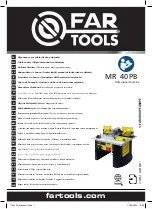
10
•
If the clock reference is not from a SyncE port, the system distributes the QL out of all SyncE
ports.
•
If the clock reference is from a SyncE port, the system distributes the QL out of all SyncE ports
except for the reference input port. To prevent timing loops, the sent QL is DNU on the timing
reference input port.
Input QL updating on SyncE ports
The default input QL is DNU on a SyncE port. The port updates its input QL when it receives a
quality level higher than DNU. The DNU level will be restored if the port does not receive ESMC
packets within 5 seconds after the update.
Protocols and standards
•
ITU-T G.781,
Synchronization Layer Functions
•
ITU-T G.813,
Timing characteristics of SDH equipment slave clocks (SEC)
•
ITU-T G.823,
The control of jitter and wander within digital networks which are based on the
2048 kbit/s hierarchy
•
ITU-T G.8261,
Timing and Synchronization Aspects in Packet Networks
•
ITU-T G.8262,
Timing Characteristics of a Synchronous Ethernet Equipment Slave Clock
(EEC)
•
ITU-T G.8264/Y.1364,
Distribution of Timing Information through Packet Networks
Restrictions and guidelines: synchronous
Ethernet configuration
•
Synchronous Ethernet is supported only on the following interfaces:
{
Interfaces on a CEPC-XP48RX card.
{
Interfaces operating in LAN mode on a CEPC-XP24LX card.
{
Interfaces on the MIC-CP1L, NIC-CC1L, and NIC-CC2L subcards.
{
Interfaces operating in LAN mode on the MIC-XP4L1, MIC-XP5L, MIC-XP5L1, and
MIC-XP20L subcards.
For information about LAN mode, see Ethernet interface configuration in
Interface
Configuration Guide
.
•
Synchronous Ethernet operates correctly only when the device runs the CSR05SRP1L3 and
CSR05SRP1P3 MPUs.
•
The device does not support Synchronous Ethernet in an IRF fabric. For information about IRF,
see
Virtual Technologies Configuration Guide
.
Configuring SyncE on an Ethernet interface
1.
Enter system view.
system-view
2.
Enter Layer 2 Ethernet interface view or Layer 3 Ethernet interface view.
interface
interface-type interface-number
3.
Enable the synchronous mode.
synchronous mode
































